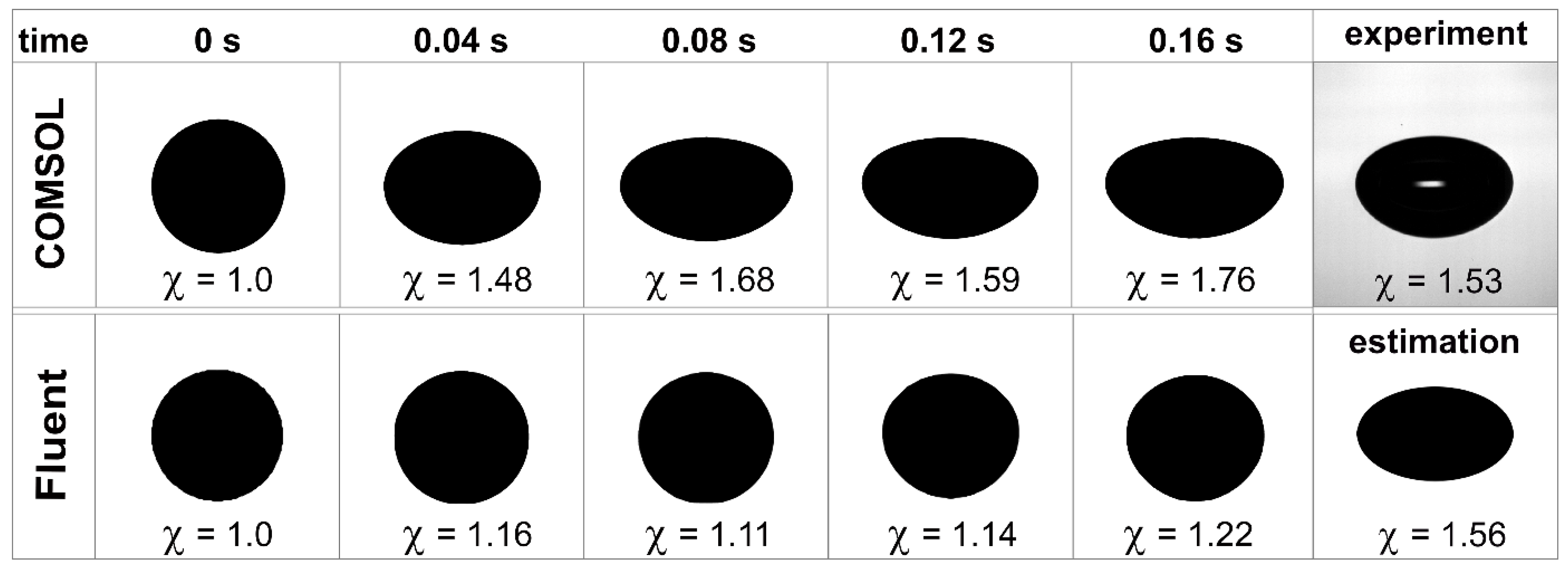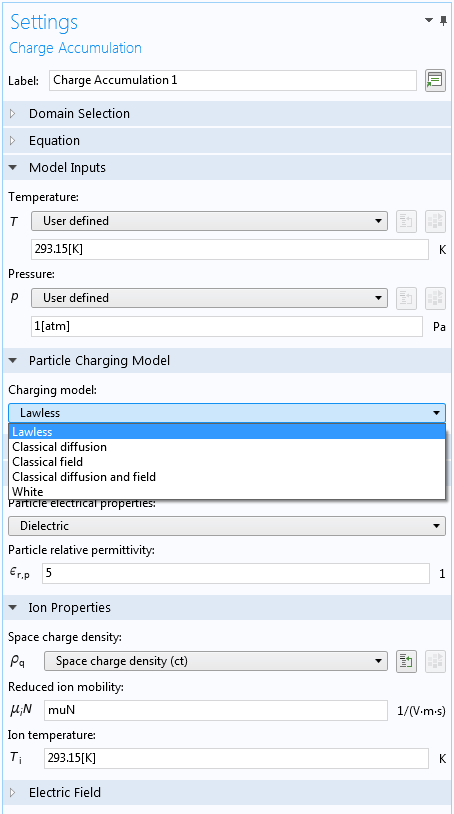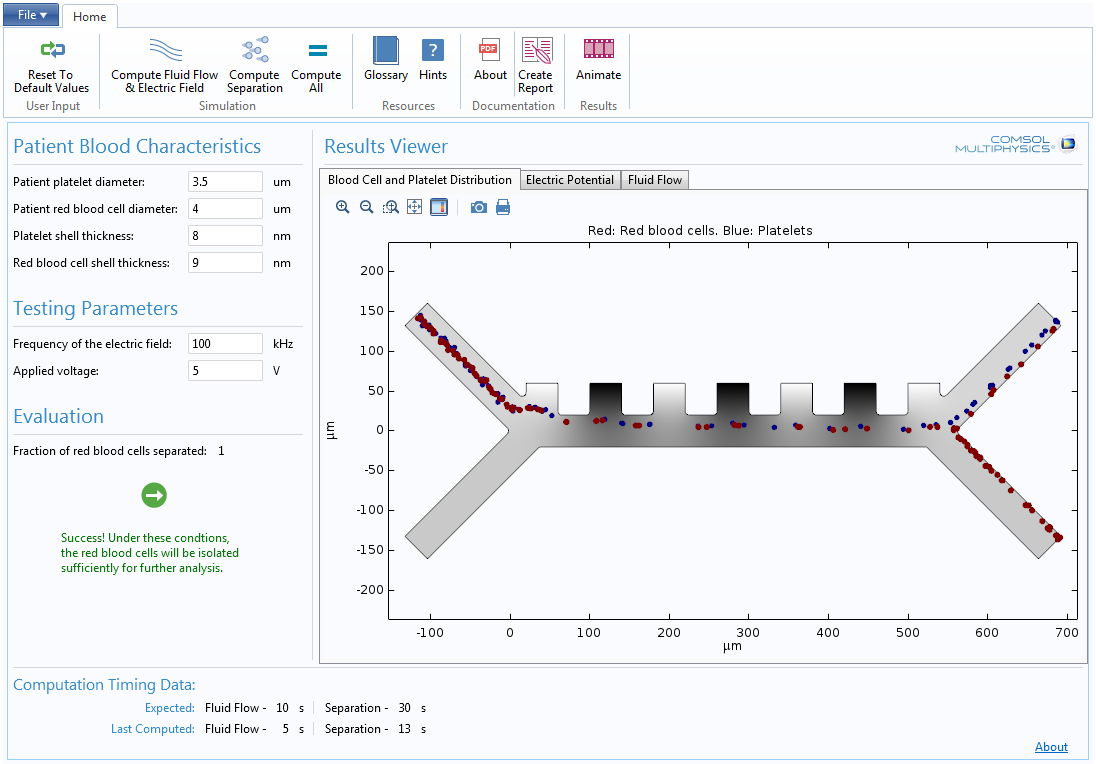

Field continuity for modeling resonators in the optics. There is an optical library containing over 1400 materials along with support for heating and coupling features. It features a new parts library to use parameterized part for easy use.

Multiphysics can take care of different fields modeling and simulation with CAD support.
#Comsol 5.1 diffusion particle Offline
COMSOL Multiphysics 5.1 free download standalone offline setup for Windows 32-bit and 64-bit. The heat diffusion equation that is solved using the coefficient form of partial differential equation is verified by modelling and solving the problem on the heat transfer module.Multiphysics 5.1 is a complete modeling and simulation tool to enhance the simulation experience using boundary and finite element method technology. The temperature distributions are studied for 100 seconds as indicated in Figure 2. See Figure 1.įurther, the temperature distribution of the object on selected points and edge are studied. The dependent variable u which represents the temperature at space and time coordinates is solved and the results are presented. The coefficient form of partial differential equation in mathematics module of Comsol Multiphysics 5.4 is used to model the geometry and solve equation (4). Accordingly, the coefficients presented in equation (6) are determined. The block has the following physical properties, heat source and boundary conditions: ρ=1200 kg/m^3 ,C_p=30 J/(kg.K),k=30 W/(m.K),q=3000 W/m^3, T_left=T_right=0 K. The change in temperature distribution within the block is studied for 100 seconds. The temperature at its two end surfaces are kept at constant values (Dirichlet boundary condition). A rectangular block of l=1000 mm,w=200 mm and h=150 mm with a heat generation in its midsection is studied for time interval of 100 seconds. Using the above customized form of partial differential equation, a 3D transient conduction heat transfer is solved. The boundary conditions may be defined as constant values (Dirichlet) or variables as functions of different parameters. The reduced form isĮquation (4) is reduced to equation (3) form by setting the coefficients e_a=α=γ=β=a=0.Īn important condition for solving the partial differential equation is the definition of boundary conditions. By removing unwanted terms including the mass and convection, equation (4) can be sufficiently reduced to heat diffusion equation form presented by equation (2).

The terms are equated with the source term on the right side. The terms in equation (4) from left are, mass, damping, combined conduction, convection and source, convection, and finally absorption. The governing partial differential equation of the coefficient form is The heat equation can be presented in Laplace form asįor a constant thermal conductivity k, the equation 2 can be rearranged.Įquation (3) can be represented in Comsol using the coefficient form of partial differential equation. It is usually solved using discretization as an approximate solution that consumes time and higher computation costs.Ĭomsol provides a coefficient based partial differential equation analysis in its Mathematics module that can be customized to solve the 3D heat transfer in solids presented by equation (1). Finding a theoretical solution to equation (1) is cumbersome and leads to no specific closed form. The complexity of solving the above differential equation lies on finding the temperature variation in 3D spatial and time coordinates.

The three-dimensional heat diffusion equation in cartesian coordinate isĮquation (1) presents the temperature variation in space and time for an object that has a volumetric heat generation. Similarly, in heat transfer, the temperature distribution in time and space can be determined by solving the heat diffusion equation. For example, in solid mechanics, the stress distribution can be solved by finding the solution of equilibrium equations in x, y and z coordinates (cartesian coordinate system). Many engineering problems are solved by finding the solution of partial differential equations that govern the phenomena.


 0 kommentar(er)
0 kommentar(er)
